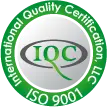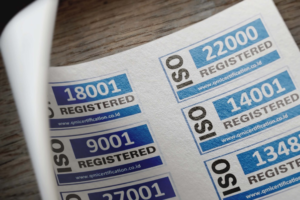International Organization of Standardization (ISO) is an independent standard for companies and businesses to compete in the global market. With rapid globalization, several businesses look to expand their operation to newer international markets. Different countries have different regulations on business procedures that determine their standards, and the market expectation reflects it. To compete in overseas markets, businesses follow a global standard set by industry specialists from all over the world through ISO.
Companies pursue these certifications because they ascertain the operations of the business. How can your business acquire them? This blog will serve as a guide to businesses that want to qualify for ISO certifications.

1. Decide On The Type Of Certification
Before developing a plan to acquire the certification, decide what kind of ISO certification meets your business model the most. ISO has roughly 22000 certifications, of which the most popular one is ISO 9001, the latest standard set for quality management systems. All types of businesses can opt for 9001 certifications to accredit their business.
On the other hand, there are certifications aimed at specific businesses, such as ISO 13485, which defines standards for medical device manufacturers, or ISO 14001, which sustainable brands can opt for. To qualify for an ISO certification, you want to ensure that you understand the requirements of the certification you choose thoroughly because your quality management system will fulfill these requirements.
2. Make A Plan
A quality management system starts with a plan. Businesses analyze their revenue models and come up with solutions to refine processes. This means introducing and developing policies and procedures that help companies enhance their customer experience. A good plan looks at the objectives to be achieved through a quality management system, and addresses defect in the current quality that can be improved later.
Planning is where most of the work lies. The company has to document each process extensively and put them into policies that are mandatory for employees to follow.
For example, eco-friendly brands have to document their sustainability plans and suggest policies for their future direction in resource conservation. Similarly, high-risk work environments like construction or mining have to form occupational health and safety (OHS) guidelines for ISO 45001 certification.

3. Put The Plan Into Practice
Once the plan is made, it is put into practice. This step requires a lot of data collection to check for hiccups in policies, production, and training. Implementing the plan is important because this is where most of the changes in company procedures take place. Extensive audits have to be carried out at all levels of management.
At the end of an audit, company performance is reviewed using metrics like return on investment. The results of the implementation determine whether the company qualifies for an ISO certification.
4. Troubleshoot Problems
Implementing the plan leads directly to this step. Since everything is documented, the company can figure out where it can improve based on performance results.
Customer satisfaction is the major objective of quality management systems. If the goals set by the business to qualify for an ISO certification are not met, it means the company can undergo more changes to arrive at the desired results. This is where it starts troubleshooting the problems with the plan.
This step, along with the last two, is in a feedback loop. The results of the implementation are constantly changing based on changes to the initial plan. The exercise helps businesses refine their goals.

5. Choose An Accrediting Body
Choosing a reliable accrediting body is very important. A simple way to be safe is to visit the firm’s website and check if it is a recognized accrediting body, has expertise in a particular certification, and has positive client reviews. While typically this step comes after implementation, you can start taking quotes from different accreditors early to get a sense of the market.
Different accreditation firms offer different degrees of assistance. For example, one firm only offers auditing services while another firm offers a long-lasting relationship during which you register, consult, and take auditing services from the firm. For the latter, it is good to get them involved earlier for knowledge and support.

6. Register Your Business
Once you have chosen an accrediting body, the next step is registering for the ISO certification. This is where external bodies, i.e., the accrediting body, audit the company’s policies and procedures to deem if they qualify for ISO certification.
Nonconformance in any procedure is recorded and sent for feedback which the company is expected to improve upon. Corrective and preventive action (CAPA) is taken by companies that may be nonconforming on a key procedure, resulting in underperformance.
The standard protocol is to pinpoint the cause of the underperforming key procedure, take corrective action, and monitor its performance. It is also important to document the way the company deals with nonconformance to establish policies around it.
7. Annual Surveillance Audits
Once the nonconformance is handled, the business can get its ISO certification. The accreditation lasts for three years, after which, if the company does not renew it, it expires. This means the business cannot use the certification claim on any of its branding or on the website.
To avoid losing the ISO certification, businesses should incorporate annual surveillance audits in their planning to ensure their quality management systems still qualify for ISO certification standards.

Auditors that enter into long-term relationships with businesses offer annual surveillance audits to ensure businesses maintain their policy implementation. As a result, at the end of three years, the business does not have to put much effort into renewing the accreditation apart from registering for it.
We are a recognized ISO registering firm that offers ISO 9001, 13485, 14001, and 45001 registration services to automotive, manufacturing, and industrial businesses. Our associates understand the standards set by ISO and are available to guide clients. If your business is looking for an ISO certification, get in touch with us.







